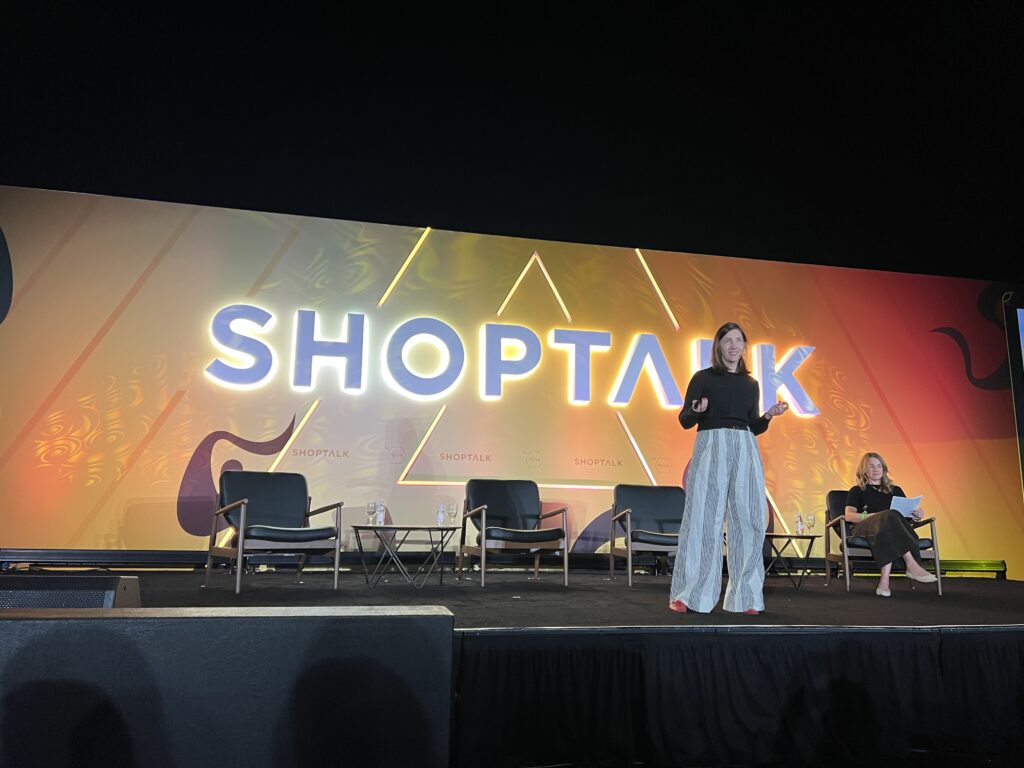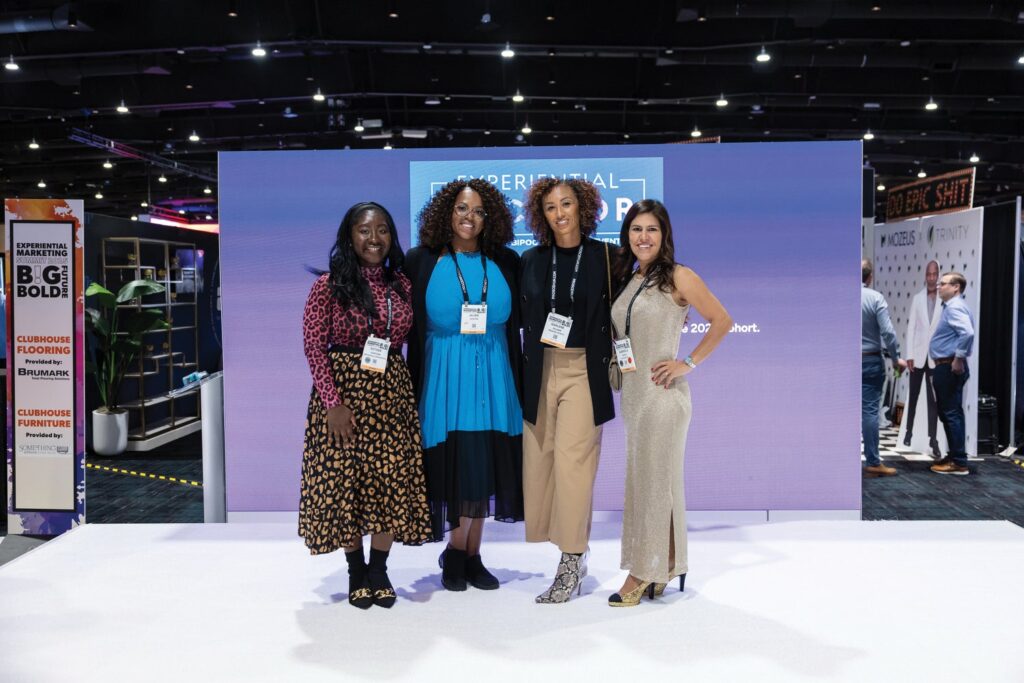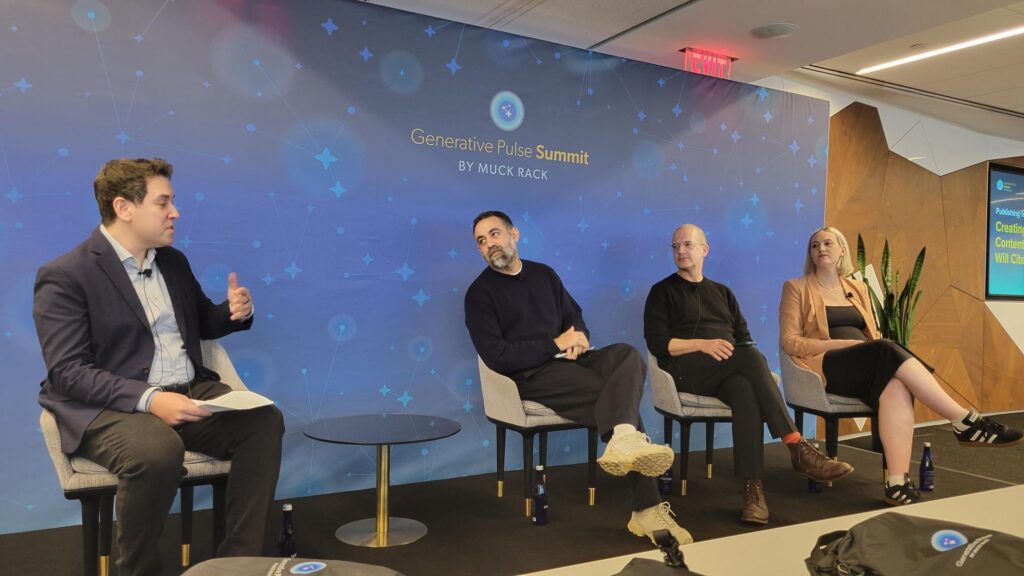Camp, a children’s entertainment and retail brand, is attracting 2 million consumers to its locations each year by creating interactive experiences to its ticketed events, CEO Jenica Myszkowski said at Shoptalk Fall.
Family experience retailer Camp is building a loyal, thriving base of millions of shoppers by focusing on engaging and immersive experiences.
Camp has nine U.S. retail locations that provide an immersive environment for children to play and interact in a world of a popular character or TV show, such as Bluey, Paw Patrol, Peppa Pig, Gabby’s Dollhouse and more. The experience is meant to bring to life these scenes that children have only seen on TV or in a book and allow them to interact with all the elements of that world. Consumers need tickets (which start around $24 per person) to play in the area. Beyond this, the brand also offers interactive crafts, such as making slime, beading a friendship bracelet and painting.
The second half of Camp is the store, which has toys and other children’s items. And the products are flying, CEO Jenica Myszkowski told attendees at the Shoptalk Fall conference in September in Chicago.
Camp Finds its Winning Formula
The concept is working. Camp has 2 million annual in-store visitors, and on average families visit 2.5 times per year. The brand sells 600,000 event tickets per year. It just expanded internationally with a deal with hotel loyalty program Marriot Bonvoy. The goal is to have 20 locations by the end of 2027, Myszkowski said.
It took a few years to find this winning formula, Myskowski said. The brand launched less than 10 years ago in 2018, by two parents looking to answer the question, “What should we do with our kids today?” Camp launched with a front-of-house store and a “behind-the-door” area with free immersive activities for children. The locations closed during the COVID-19 pandemic and when they reopened, the brand sold tickets to the play area to manage capacity.
“We realized there was a ton of demand for localized, high-quality entertainment,” Myszkowski said.
And so the paid tickets stayed and the dollars started rolling in. When Camp began working with characters from Disney and Paramount, more consumers quickly became tuned into the brand and ignited its growth. Visitors love the experience, tell their friends and buy the products. Consumers spend on average 90 minutes in the stores and visit in groups of three or more.
“Fast forward to 2025, we’ve fully evolved to an entertainment company with over 60% of our business this year coming from entertainment and ticket sales,” Myszkowski said.
Change and Refreshed Experiences Keep Shoppers Coming Back
Camp has 281,000 social media followers, 15 million annual page visits and 1 million known customer emails.
Myszkowski said Camp entices shoppers to come back to its stores by changing the experiential theme every six to 12 months, keeping the crafts tied to the calendar seasonals and having its own traditions. For example, Camp has a “yes day” in its stores where there are “no nos.” Every month it rotates its slime bar to have a different theme, such as back-to-school slime or Halloween slime.
“We believe that these types of pop-up strategies that again, keep the customer coming back, can be done in a pretty efficient way and create really lasting engagement,” she said. “The parent is the hero and they’re doing something really enriching and fun for their kids. We believe that that drives an incredible amount of brand loyalty. And again, it doesn’t have to [be] big budget.”
Customer Feedback and Slime are Key at Camp
Slime is big part of Camp’s business. Camp updated one of its store’s slime bar to now accommodate 10 kids up from the previous two-child station.
“We just launched a larger slime station in Charlotte, and it was 40% of the business last week,” Myszkowski said. “That’s a big business that will grow.”
Recently it launched “Camp TV” which is its quick way to receive instant feedback from kids after they do a ticketed Camp experience. On a pretend TV program immediately outside of the play area, the brand asks children what was the most fun, their favorite thing, what they wished they did more or missed, to get their honest, right-after-the-moment feedback. This feedback is incredibly valuable, she said, as the child is the primary user. It also surveys every parent who purchased a ticket to the event. Camp “obsesses” over this feedback and weaves it into its future activations, she said.




